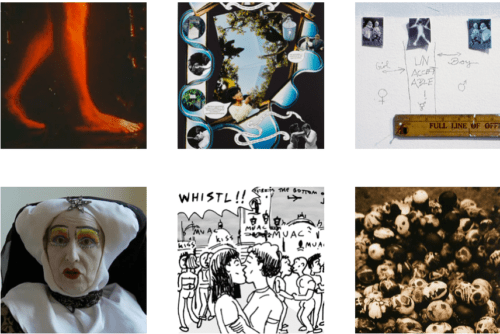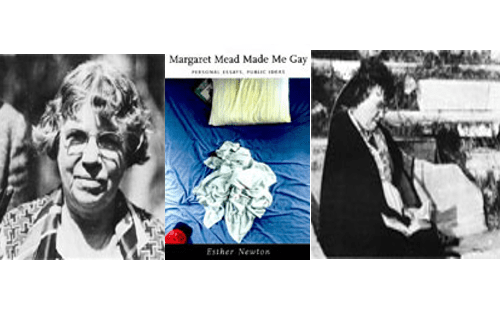Section Two
Molecular Shifts of Fate and the Romance of Gender: Desire and Duty in the Molecular Body
It can at first seem counter-intuitive to claim that genetics positions us vis-à-vis the biological body through different relations than the shame and death that characterized the modern clinic. Physicians speak of genetic errors as ‘lesions,’ much as doctors in the modern clinic looked for lesions on tissues. The gene has been stubbornly imagined in scriptural terms (although scientists disconfirmed the accuracy of images like ‘information,’ ‘language,’ ‘code,’ and ‘text’ in the 1950s).12 The dream of mapping the dark continent of the body’s submicroscopic interiors was crucial to enabling the massive computer sequencing required for the HGP to be cast as the next step in American Manifest Destiny and thus to be funded by Congress.3
Yet these lines of continuity unfold within a different horizon. The project of molecular biology was never imagined as tearing aside the visible body to uncover the mute violence devouring us in our inner darkness. Idealizing molecular biology as the science of life that could resurrect something good out of WWII helped crystallize a new origin story for a genetics anxious to reject eugenics. Explicitly distinguished from nuclear physics (epitomized by Oppenheimer quoting Krishna: “I have become death, the destroyer of worlds”), molecular biology was promoted as an essential tool in the Cold War arsenal that could provide solutions to the dangers spawned by atomic radiation and later by the population bomb.4
More generally, this dream of life and its boundless productivity also animated the post-Fordist economy more generally. The thought was that unleashing the creativity of scientific minds could enable Western societies to escape death and waste—the very limits of industrial production. Cooper points to economists in the 1970s who began to argue that Fordist economies would necessarily decline due to finite resources and aging populations. At the same time, big pharma began to face the end of its patents on the miracle drugs of the mid-century, while chemical industries began to face the eclipse of the Green Revolution in agriculture. In response to this conjuncture, Post-Fordist regimes emerged. Tracing a “tight institutional alliance” between “epistemic, experimental, and commercial modes of speculation,” Cooper contends that the model for these new or post-Fordist modes of accumulation is the generation of surplus value from life’s capacity for future capacity.5 She writes: “the biotechnological solution to economic limits seems to encapsulate the speculative euphoria of revalorization at the most intimate of material levels.”6 Such regimes promise to render even debt productive, both the colossal debt of the United States as well as the expanded sense of debt to life that characterizes much public discourse around the genome.7
While degeneration and disease remain a concern in molecular medicine, the wear and tear of tissues is no longer taken as the last word on organic life. Nor is in-depth knowledge of a thing’s history taken to constitute what it means to know. No longer the amoral nature of animals, biological life becomes a matter of forces on whose surface effects calculated transformations can take hold, re-working even time. Hence knowledge that focuses on the hopes and risks of biological control dreams less of prevention (although fears are invoked) and more of pre-emptive optimization. Knowledge-power relations here aim less to discipline than to arouse and to facilitate, to allow natural processes to do their thing on one level of development, so as to produce a desired effect on another level of development.8 Today ‘we’ dream that reading the digital Book of Life will enable us to tap the forces of life directly.
Consider how private umbilical cord banks use the fact that different parts of the body wear out at different rates to promote themselves as biological insurance: “You miss the chance if you decide to throw out the cord blood,” says one lab director.9 Here ‘waste’ generates value. According to Waldby and Mitchell, private cord blood accounts provide a new relation to tissues: neither gifts (blood banks) nor commodities but family property that pre-empts claims by others even as it doubles biological time. The account holder’s body ages while the preserved tissue retains the capacity to recreate the blood system should need arise.1011
One does not extract value from this kind of family property by learning to relate to oneself as a being “inhabited by a deep internal space shaped by biography and experience, the source of our individuality and the locus of our discontents.”12 Rather than hinging on confession, producing value out of life’s capacity for future capacity hinges on manipulating the molecular memories that link soul to body through a fate that ‘flattens’ identity into temporal networks.13 This flattening authorizes different expectations (than seeing through the visible body into its invisible depths). The perception that biological life and human control are inextricable generates the expectation that ‘we’ can touch life’s nascent forces of (re)generation by means of targeted interventions so ‘small’ they become ‘smart.’ ‘We’ dream not merely of using biology as raw material, but of directly shaping the biological body’s capacity for future capacity.
The hopes and risks of smart touch are grafted onto the flatness of molecular mechanisms most often through a rhetoric of impersonality that re-animates the scientific secular by updating Foucault’s ‘speaker’s benefit.’ Consider its articulation around race. If the twentieth century was the century of the gene14 and the color line15, twenty-first century science asserts the hope of ‘biological control’ by promising that accessing molecular pathways will free us from the social shame of racial disparities (now deemed merely cultural).16 The hope here is that medical professionals will see sickle cell disease, for instance, as a matter of genetic mis-codings and thus resist any racial stereotypes that arise when confronted with young African-American men in an emergency room asking for narcotics. Rather than refusing to treat ‘the whole patient,’ evidence-based medicine claims that focusing solely on molecules can short-circuit prejudices. A similar hope undergirds support for medications like BiDil (the first heart medicine marketed to African-Americans). Supporters contend that we can circumvent the cultural causes of racial disparities in health care through protocols that use race as proxy, or (even better) that prescribe BiDil not because a patient ‘looks black,’ but because their blood exhibits lower levels of nitric oxide (which BiDil raises; African-Americans as a group, although not every individual African-American, have less nitric oxide in their blood).1718
- L.E. Kay, Who Wrote the Book of Life?: A History of the Genetic Code (Stanford, CA: Stanford University Press, 2000): 226. [↩]
- While the gene is still invoked as ‘the book of life,’ I read such insistent recourse to biblical images as signifying discontinuity. Imagining the gene in scriptural terms reaches back “beyond” the modern way of understanding the body in terms of its depth in favor of taking up older, usually Renaissance [Haraway (1997): 166-61], forms of textualizing nature. Paradoxically, then, taking recourse in biblical images signals the ‘newness’ of genetic medicine by casting the gene within a different frame and a different promise than the austere authority of a ‘great white eye’ strong enough to see the invisible death governing the body’s life from deep within. [↩]
- A. Dreger, “Metaphors of Morality in the HGP,” Controlling our Destinies, P.R. Sloan, ed. (Notre Dame: University of Notre Dame Press, 2000). [↩]
- van Dijck (1989): 34. [↩]
- M. Cooper, Life as Surplus: Biotechnology and Capitalism in the Neoliberal Era (Seattle: University of Washington Press, 2008): 142. [↩]
- Cooper (2006): 7. [↩]
- Cooper (2008): 15-50. [↩]
- Foucault (2007): 235-239. [↩]
- Quoted in: C. Waldby and R. Mitchell, Tissue Economies (Durham, NC: Duke University Press, 2006): 127. [↩]
- Waldy and Mitchell, 123-5. [↩]
- While what private cord banks promise is at present clinically dubious [Waldby and Mitchell (2006): 121-2], imagining molecular mechanisms as endlessly regenerative pressures existing technologies. Without enough citizens willing to donate tissues, “[s]pare kidneys thus join the other flows of living, profitable matter (genetically or agriculturally available materials, human ova) that move from South to North to feed the demand for new forms of vitality and biovalue created by new biotechnologies”[Waldby and Mitchell (2006): 180]. Epstein makes a similar argument regarding the transnationalization of clinical trials: S. Epstein, Inclusion: The Politics of Difference in Medical Research (Chicago: University of Chicago Press, 2007): 197-201. Cooper’s work provides a theoretical basis for generalizing these claims [(2008): 15-50] [↩]
- N. Rose, “Neurochemical Selves,” Society Nov/Dec (2003a): 54. [↩]
- Ibid. [↩]
- Keller (2000). [↩]
- W.E.B. Du Bois, The Souls of Black Folk (New York: New American Library, 1969). [↩]
- Nash makes the same argument regarding direct access for genetic tests in genealogy: C. Nash, “Genetic Kinship,” Cultural Studies 18:1 (2004): 11 and 20. [↩]
- N. Zack, “Why BiDil is Not the Answer: The Real Disconnection between Race and Medicine,” Paper presented at the Center for Applied Ethics, University of North Carolina at Charlotte, 19 March 2007. [↩]
- For entree into medical profiling debates, see Epstein (2007): 203-32. [↩]




